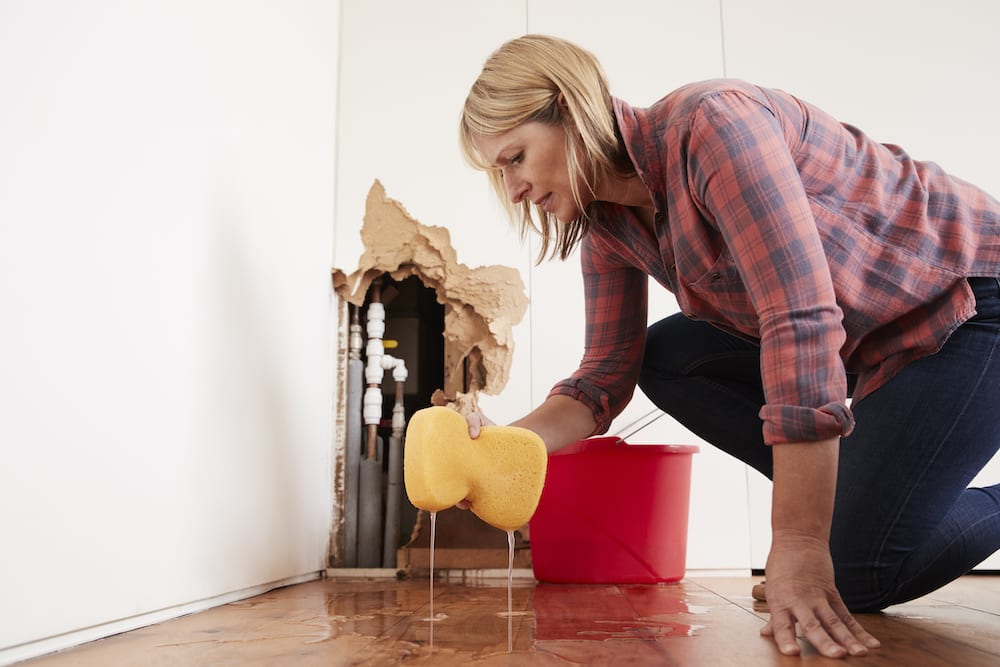- Published 28 Mar 2024
- Last Modified 28 Mar 2024
- 5 min
How to Detect Water Damage at Home
Learn effective ways to detect water damage at home, saving time and money on costly repairs. Read this comprehensive guide now and take swift action.

The prevalence of water damage in Australian homes is on the rise, accounting for 34% of property-related claims among insured homeowners, according to a previous report by Chubb. This surpasses even fire, weather, and theft in terms of potential property damage costs.
Claims for water damage can vary widely, with figures ranging from $5,000 to an alarming $500,000 for the most severe incidents. Recognising the signs of water damage in walls, roofs, or other critical areas, is essential for preventing such extensive damage and costs and ensuring the longevity of your home.
To assist homeowners in safeguarding their properties, we’ve provided practical strategies below to address this pervasive issue promptly.

Visual Inspection
A thorough visual inspection is crucial for identifying early signs of water damage within your home. Here's a step-by-step guide to help you conduct an effective inspection:
- Examine Walls for Discolouration or Stains: Start carefully examining your walls. Given Australia's rising humidity levels during the summer, lookout for signs of discolouration or stains, which are often indicators of moisture problems, usually resulting from condensation. Additionally, hidden leaks can also be a contributing factor to these issues.
- Check for Peeling or Bubbling Paint: Notice any signs of peeling or bubbling paint on walls or ceilings. This may indicate prolonged exposure to moisture or water damage on the roof. Such damage can also affect the aesthetic appeal of your home, necessitating prompt action to restore its integrity.
- Inspect the Roof for Damage: Pay extra attention to the roof, particularly during the wetter months from December to March, when increased rainfall can heighten the risk of water damage. Look for any missing or damaged shingles, as these can allow water to seep into your home. Also, make sure to regularly clean gutters and check that they are draining properly to avoid water pooling around your foundation, which could lead to serious structural issues.
- Look for Signs of Water Damage on Ceilings: Don't overlook the ceilings inside your home. Any signs of watermarks or swelling are indicative of hidden leaks from ceiling pipes or water damage on the roof.
- Identify Visible Mould or Mildew: Lastly, be vigilant for visible mould, especially in damp areas. This not only indicates an ongoing moisture problem but also poses serious health risks, including respiratory issues and allergies.
By tackling these signs of water damage early, you can help avoid more significant complications, ensuring your property’s safety and structural integrity.
Monitoring Water Bills

Keeping a close eye on your water bills can be a proactive measure against hidden leaks or plumbing problems. With the South Australian Water Corporation's plan to increase water bills, pinpointing these discrepancies becomes increasingly crucial to sidestep substantial financial burdens.
An unexpected increase in your water bill may hint at unseen leaks, which may suggest escalating water damage. These issues emphasise the need for swift action to mitigate costly repairs and water bills.
Moreover, utilising water metre readings as an early detection tool is also recommended. This provides a clear indicator of your household's water usage patterns. Regularly check your water metre before and after no water use (such as overnight) to spot any unusual increases that could suggest hidden leaks.
Understanding your usage is crucial in light of rising water costs in Australia and the looming threat of cities like Sydney running out of water. It serves both as a conservation effort and a defensive strategy against potential water damage to your home.
Unusual Odours
Unusual odours within your home can serve as subtle water damage indicators, necessitating a closer look to identify their origins.
A pervasive musty odour typically signifies the presence of mould, which flourishes in environments saturated with moisture due to leaks or condensation. Check areas prone to dampness, such as under sinks, basements, or around water heaters and pipes.
Conversely, a metallic scent may indicate the onset of rusting in pipes. This distinctive smell can arise from metal oxidation in the presence of moisture. Inspect visible piping and faucets for any signs of corrosion, as this may not only lead to leaks but also affect the water quality in your home. Similarly, a sewage-like odour suggests potential issues with the plumbing system, likely indicative of leaky pipes.
If such odours persist without a discernible source, it is advisable to engage the expertise of a licensed plumber or home inspector and get a comprehensive moisture assessment.
Use Moisture Metres
A moisture metre is a simple yet effective tool used for conducting moisture tests to measure the percentage of water content in materials like walls, floors, and ceilings.
Aim it at different parts of your house, especially where water intrusion is likely. If the metre shows high moisture levels, this could suggest there's water damage lurking out of sight. To address elevated moisture levels, improve ventilation, use dehumidifiers, and fix leaks promptly.
Getting a good quality moisture metre can make detecting these problems quicker and more accurate, indicating when it's time to take action. This way, you can tackle moisture issues early on, preventing bigger, costlier problems down the line. You can check out our complete guide to moisture metres to learn more about using them.
Take Action Against Hidden Home Hazards
Addressing water damage promptly is crucial for maintaining the integrity and comfort of your living spaces. In response, RS Australia supplies high-quality testing and measuring equipment, such as moisture metres to empower homeowners with the right tools for early detection and prevention. Complementing this, we also offer air quality testers and hygrometers to help monitor humidity levels and ensure a healthier home environment.
Trust RS Australia as your partner in upholding a resilient and secure home.